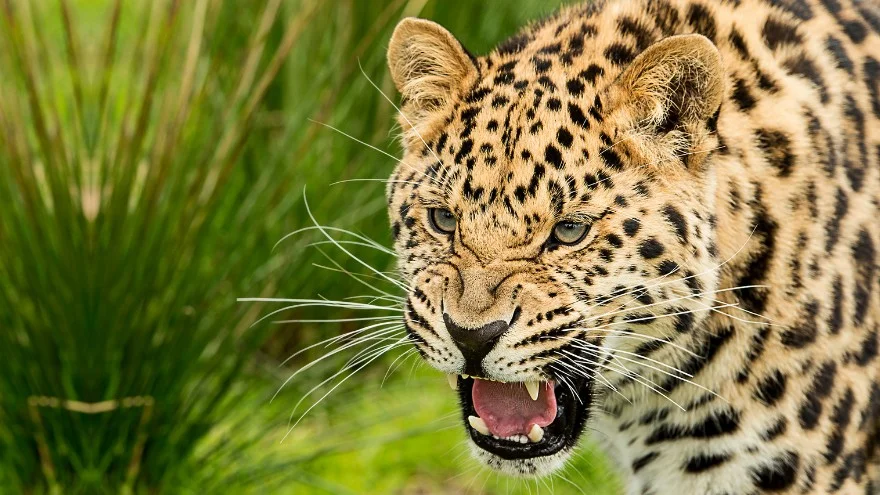Animals abound on our planet, both around us as domestic pets and out in the wild as free, roaming animals.
According to the report of National Geographic, there are around 8.7 million animals with 1.2 million being identified. This means we haven’t even known most of them!1
Amidst these animal species, some are very uncommon. These rare animals are always a sight to see, particularly because of factors like reducing population. These creatures include pangolin, Seneca white deer, vaquita, and Amur leopard, among others.
Here on our list, we present the top 15 of the rarest animals in the world with their defining characteristic and where they can be found.
The Rarest Animals in the World
1. Pangolin

- Scientific Name: Pholidota
- Where Found: Asia and Africa
- Conservation Status: Endangered
The pangolin is known for its tough skin, and it is often said that the said skin can block off bullets.
The alternative name for the pangolin is scaly eater, and the name refers to all mammals in the Pholidota order. There are different pangolin species, some of which have gone extinct.
There are currently four species in Asia and four in Africa. All four in Asia are listed as either endangered or critically endangered.
These occur due to population decline brought about by the fact that they are considered a delicacy. They are also hunted down for their skin due to the belief that it has medicinal value.
The species in Africa aren’t safe either. All of them are headed for the endangered zone for similar reasons. Sadly, these animals are also the most trafficked mammals in the world because of the keratin their scales are made of.2
Best places to see Pangolins:
- Tswalu Kalahari, South Africa
- Shinde, Botswana
- Namiri Plains, Tanzania
- Samara Private Game Reserve
2. Amur Leopard

- Scientific Name: Panthera pardus orientalis
- Where Found: Russia, China
- Conservation Status: Critically Endangered
The Amur leopard belongs to the Felidae family, and it is considered the rarest cat in the world. The IUCN listed it as critically endangered, and for good reasons.
There are only very few left today, making this leopard stand on the edge of extinction. As of 2015, there was only an estimated 60 individuals left.
There has been a substantial increase, going up to 110 in 2019. While that is good news, much remains to be done.
The reason for this concerning status is due to the many threats this animal faces.
These include poaching, deforestation, and other forms of habitat loss brought about by the construction of new roads and forest fires. It can also be preyed upon by tigers.
Fortunately, there are steps being taken to protect the Amur leopard from going extinct.3
Best places to see the Amur leopard:
- Mountainous forests in eastern Russia and northern China.
- Land of Leopard National Park
3. Saola
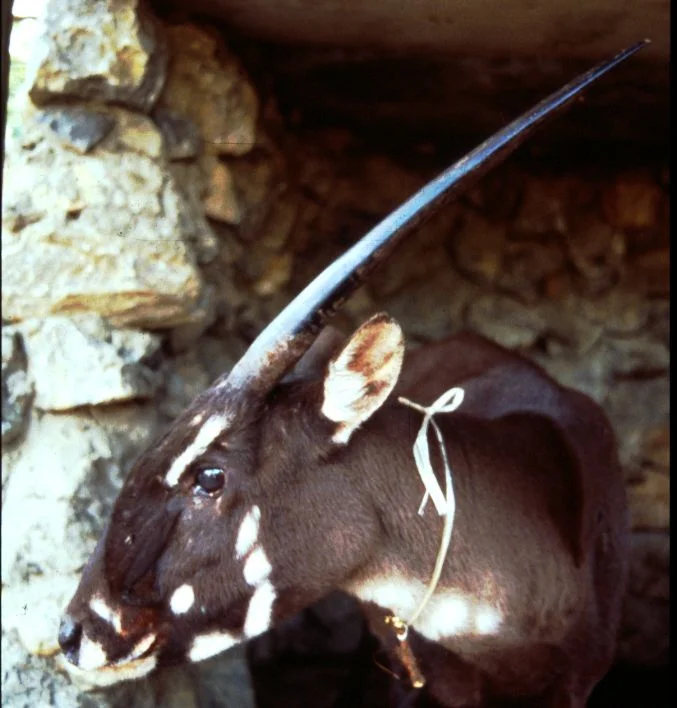
- Scientific Name: Pseudoryx nghetinhensis
- Where Found: Vietnam
- Conservation Status: Critically Endangered
The saola is also known as the Asian unicorn, the spindlehorn, and the Vu Quang bovid. It is a native of Vietnam and is considered one of the rarest mammals currently alive today.
It is similar to an antelope but is more related to cattle. Because of how limited the range is, no one is sure how many there are exactly. One thing is for sure, the saola is extremely rare.
A report lists the saola amongst the 16 animals that could go extinct in 2030. The main threat to this animal is habitat loss, one caused by human activities like agriculture and infrastructure.4
It also falls victim to hunting, especially because of its fur. Snares are additional enemies of the saola.
Best places to see the saola:
- Annamite mountains
4. Vaquita

- Scientific Name: Phocoena sinus
- Where Found: Mexico
- Conservation Status: Critically Endangered
The vaquita is the rarest marine mammal in the world, staying right on the brink of extinction. It is a porpoise species that inhabit Mexico, the only place it can be found.
There’s an estimate of only 30 individuals left, and with the elusive nature, it is unlikely you might ever see one.
If you do find one, you’d recognize it by its large gray fins and dark rings covering the eyes.
One of the major threats to the vaquita is illegal fishing around its habitat despite the effort of authorities to curtail it.
It is also exposed to pollution and habitat alteration. The few remaining individuals are usually in danger of bycatch and may be preyed on by sharks.
Overall, the biggest problem the vaquita faces remains fishing.
Best places to see the vaquita:
- Gulf of California, Mexico
5. Seneca White Deer
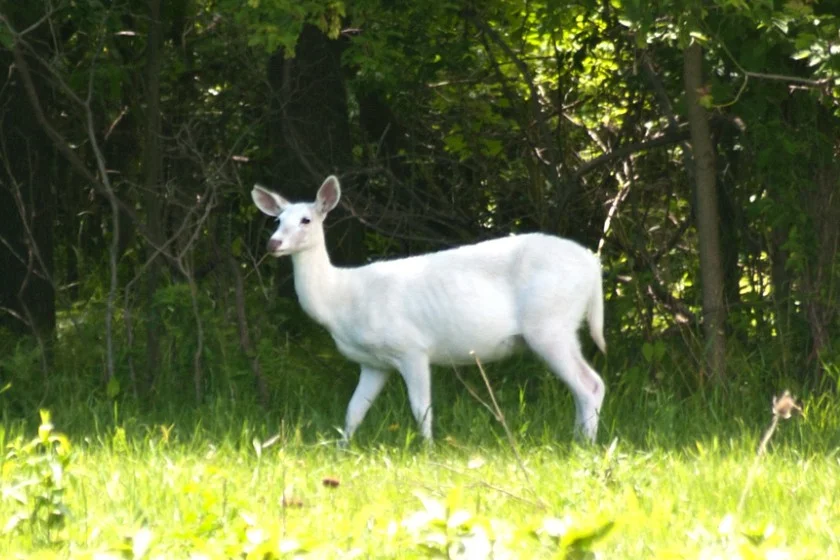
- Scientific Name: Cervidae
- Where Found: Seneca Army Depot
- Conservation Status: Critically Endangered
The Seneca white deer is an extremely rare variant of deer, and you can only find it in New York. The white color is a result of leucism, not albinism.
Leucism carries recessive genes that lead to the white coat, which are fully responsible for the difference noticed in the Seneca white deer.
The reduction of the Seneca white deer was due in large part to human activities. They were victims of hunting, but are now being protected to keep them from extinction.
They currently stay in the former Seneca Army Depot, where people can go visit.
Best places to see the Seneca white deer:
- Former Seneca Army Depot, Seneca County.
6. Hector’s Dolphin

- Scientific Name: Cephalorhyncus hectori
- Where Found: New Zealand
- Conservation Status: Endangered
The Hector’s dolphin is one of four dolphin species that belongs to the genus Cephalorhyncus.
It can only be found in New Zealand, and it comprises two subspecies: the Maui dolphin and the South Island Hector’s dolphin. The Maui dolphin is more endangered than its counterpart.
The Hector’s dolphin happens to be the smallest currently in existence today, and there are an estimated 7,000 around.
The biggest threat it faces is fishing which reduces the number drastically. It also falls victim to diseases.
Best places to see Hector’s dolphin:
- North Island in New Zealand
7. Borneo Pygmy Elephant

- Scientific Name: Elephant maximus borneensis
- Where Found: Asia
- Conservation Status: Endangered
The Borneo pygmy elephant is a subspecies of the Asian elephant, a gentle creature that can be found in Borneo.
The Asian Elephant has been considered Endangered since 1986, and so is the Pygmy subspecies. These elephants are smaller than their African counterparts.
Similar to other animals on this list, the Borneo pygmy elephant is threatened mainly by human activities.
These have led to habitat loss, degradation, and deforestation. There has also been some conflict between humans and elephants, with many casualties resulting from the clashes.
The Borneo pygmy elephant is currently under protection by many acts, including the Wildlife Conservation Enactment.5
Best places to find a Borneo pygmy elephant:
- Tabin wildlife reserve
- Danum valley
- Kinabatangan river
8. Black-spotted Cuscus
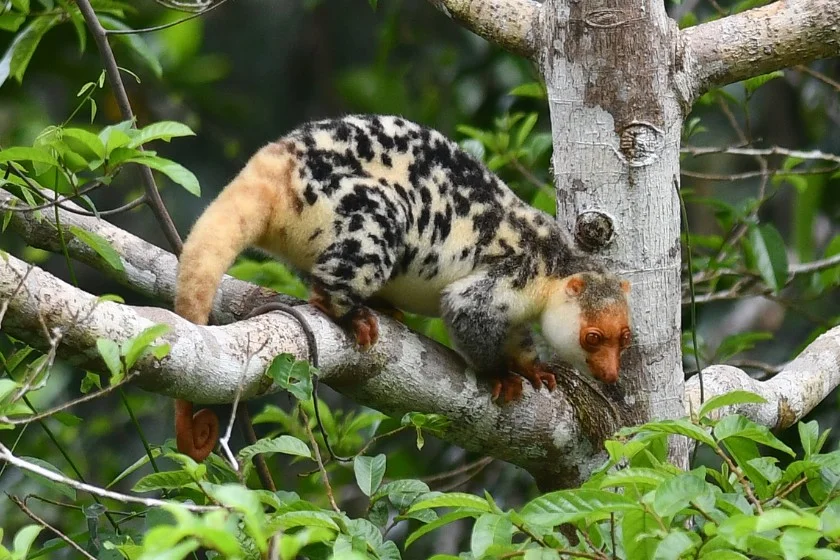
- Scientific Name: Spilocuscus rufoniger
- Where Found: New Guinea
- Conservation Status: Critically Endangered
The Black-spotted cuscus is a marsupial species that fall under the Phalangeridae family. It is a large animal, being the second largest in its family after the bear cuscus.
It is also known for being quite colorful with its red and black fur. The black-spotted cuscus is among the world’s rarest animals and can only be found in the forests of northern New Guinea.
The Black-spotted cuscus is threatened mainly by hunting and habitat loss, leading to a rapid decline.
While it was considered “Vulnerable” in 1994 and “Endangered” in 1996, it has since been listed as “Critically Endangered”.
There is no national park in Papua New Guinea that seeks to house the black-spotted cuscus. However, there are different other areas where the species can stay and be protected.
Best places to find a black spotted cuscus:
- Forests in New Guinea
9. Yangtze Finless Porpoise

- Scientific Name: Neophocaena asiaeorientalis
- Where Found: China
- Conservation Status: Critically Endangered
The Yangtze finless porpoise is a toothed whale species that live in the Yangtze river in China, as the name implies.
It is considered the only existing freshwater cetacean and faces the risk of extinction.
There are only about 1,000 left in the world. Without adequate protection, this shy fish might go extinct in a few years.
The population decline of this whale species is due to numerous threats caused by human activities on the Yangtze river. These include pollution, illegal fishing, dam construction, and vessel traffic.
The biggest form of pollution that has affected the Yangtze finless porpoise is noise pollution.
The Chinese government is actively working on protecting this whale from extinction. It is being supported by agencies like the World Wildlife Fund and IUCN.
Best places to see the Yangtze finless porpoise:
- Yangtze River, China
10. Northern Hairy-Nosed Wombat
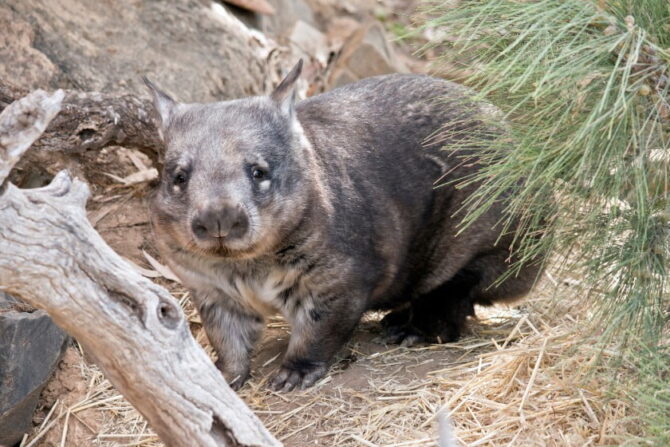
- Scientific Name: Lasiorhinus kreftii
- Where Found: Queensland
- Conservation Status: Critically Endangered
The Northern hairy-nosed wombat is one of three marsupial species, all of which are called wombats.
It also goes by the name yaminon. The hairy-nosed wombat once had a range that extended across New South Wales, Victoria and Queensland.
In recent years, however, it is limited to Queensland. This species has become rare and is listed as endangered.
These animals face many threats, including predation, disease, food, droughts, and flood. It can also fall victim to wildfires and other forms of habitat loss.
Because the hairy-nosed wombat is focused on one range, it is exposed to many dangers in its environment.
There have been many conservation projects aimed at protecting the northern-haired-nosed wombat. Thanks to these, the population has increased over the years.
Best places to see the Northern hairy-nosed wombat:
- Epping forest national park, Queensland
11. Tiliger
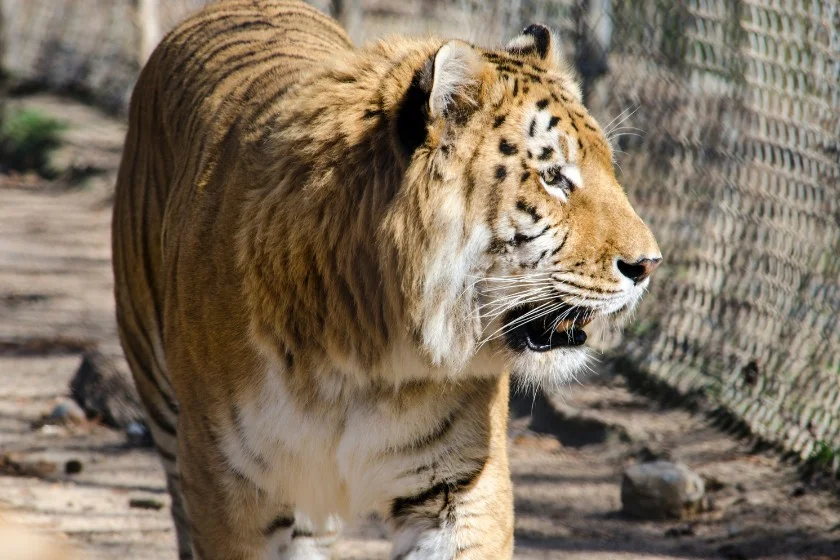
- Where Found: California
- Conservation Status: Rare
The tiliger is a mix between a tiger and a liger, the latter of which is also a mix between a lion and a tiger.
Because it is a recent development, there aren’t many tiligers in the world. There is a lack of information on them too.
What we do know is that the crossbreeding of lions and tigers isn’t new. It first began in the early 19th century in India.
The tiliger is very rare, and in the United States, only one can be found in California. There are also a few scattered around the world. The good news is that it has good health. There might be an increase in years to come.
Best places to see the ti-liger:
- Oreville, California
12. Elephant Shrew

- Scientific Name: Mascroscelididae
- Where Found: Africa
- Conservation Status: Rare
The elephant shrew is so named because of its trunk and resemblance to shrews. However, it isn’t a true shrew and is more related to elephants.
Thus, it has the alternative name sengi. It can also be called jumping shrews. The elephant shrew is considered rare thanks to a decline in population.
The major cause is deforestation, and it has gotten so bad that the elephant shrew is in danger of extinction. There are approximately 13,000 left in the world.
Best places to find the elephant shrew:
- Gede Ruins National Monument
13. Purple Frog
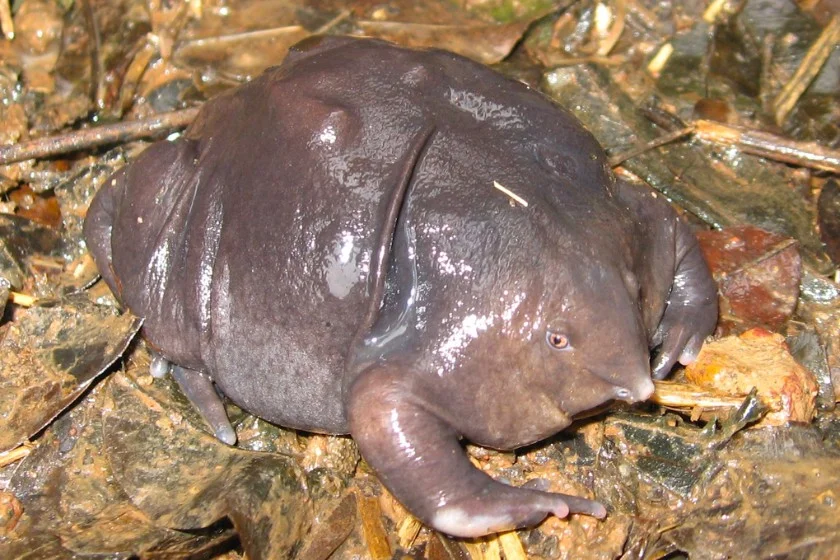
- Scientific Name: Nasikabatrachus sahyadrensis
- Where Found: India
- Conservation Status: Endangered
The purple frog is also called the Indian purple frog or the pignose frog. It is a frog species that can currently only be found in India.
This frog is hard to see because it spends most of its time underground, and it may not be pleasant to view because it is bloated.
Deforestation is the biggest threat to the purple frog, and it is on the brink of extinction. Its reclusive nature makes it hard to determine the exact population, but it is endangered.
Best places to find the purple frog:
- India
14. Philippine Eagle
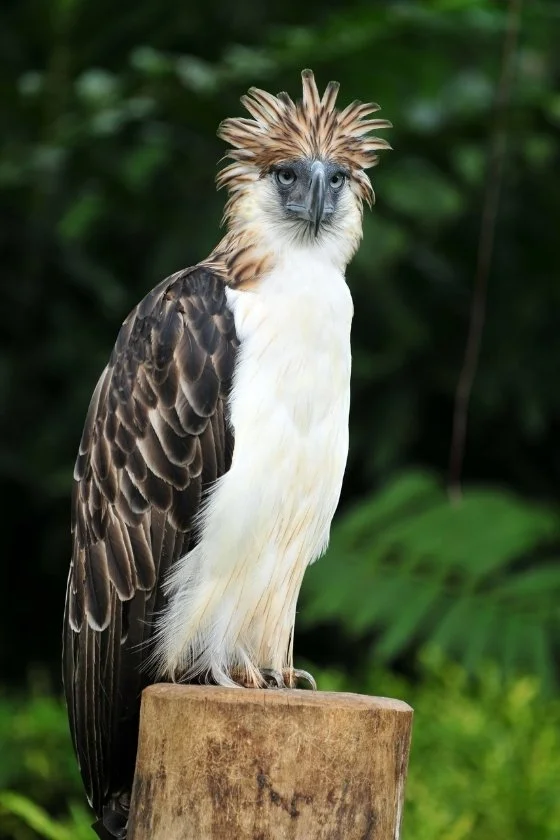
- Scientific Name: Pithecophaga jefferyl
- Where Found: Philippines
- Conservation Status: Critically Endangered
The Philippine eagle is considered the largest eagle in terms of length and surface area, but unfortunately, it is on the brink of extinction.
It is also known as the monkey-eating eagle or the great Philippine eagle. The bird can only be found in the Philippines.
Threats this bird faces include habitat loss engendered by deforestation. It also suffers from pollution, pesticide treatment, and poaching. It may also fall into traps set by people along its range.
So far there have been moves to protect it from extinction. Killing a Philippine eagle is illegal in the country, punishable by 12 years imprisonment and heavy fines.
15. Colombian Dwarf Gecko

- Scientific Name: Lepidoblepharis
- Where Found: Colombia
- Conservation Status: Rare
True to its name, the Colombian Dwarf Gecko is very tiny and can fit comfortably on someone’s finger.
It is also a very ancient animal and is considered to have been in existence since the times of the dinosaurs. However, there’s a slim chance of seeing this animal.
The Colombian dwarf is a ticking bomb, going to extinction. There are only a few left in the wild, and it has almost gone into existence.
Final Thoughts: Rare Animals are the Most Endangered Species
There are many animals in the wild, most of which are going extinct. There are far more than the ones on our list, but we’ve compiled some of the most striking.
With the steps taken to conserve many of these species, we hope to see an increase in population for most of these rare animals.
Next Up…
- Jungle Animals: 15 Species That Live In The Jungle +Pictures
- 25 Animals With Big Heads (List With Pictures)
References & Notes
- Biodiversity. national Geographic.
- Briggs H. 2019. Pangolins: Rare insight into world’s most trafficked mammal. BBC News.
- Far Eastern Leopard Conservation. WCS Russia.
- Pullano N. 2020. 16 unique animals that could go extinct by 2030 — and how to change that. Inverse.
- Legislation. Wildlife Conservation Enactment (No. 6 of 1997). FAOLEX
